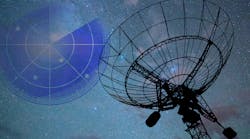Solid-State Radar Earns AN/SPY-7(V)1 Designation
The U.S. government has designated Lockheed Martin’s solid-state radar technology the AN/SPY-7(V)1 system as a testament to the acceptance of the technology as a proven defense electronics solution. This solid-state evolution of vacuum-tube technology offers the opportunity to follow reduced size, weight, and power (SWaP) guidelines in the implementation of next-generation radar systems. For example, the Japanese Ministry of Defense has selected AN/SPY-7(V)1 technology for two planned Aegis Ashore installations.
The AN/SPY-7(V)1 technology is designed for continuous surveillance duties, such as ballistic missile warning. It has a modular architecture which allows modifications as needed. The technology will be used by the Royal Canadian Navy for the Canadian Surface Combatant program. It will also be employed by the Spanish Navy in its S-band active electronically scanned array (AESA) radar systems. The AESA radars are part of the Aegis Combat System suite of electronic defense systems built into the Spanish Navy’s next generation of maritime surface vehicles, the F-110 frigates.
“Lockheed Martin’s solid-state solution meets the mission now and is flexible to adapt to the evolving threats of the future,” said Paul Lemmo, vice president and general manager at Lockheed Martin. “This new designation solidifies our ability to provide the most technically advanced capabilities our warfighters require.” The AN/SPY-7(V)1 will be fully integrated with the Aegis Combat System for future ship classes.

